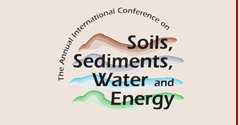Article Title
An Innovative Approach To Protecting A Municipal Supply Well – Air/Ozone Sparge Curtain Results
Abstract
Petroleum contamination from a gasoline station threatened a nearby municipal supply well. MTBE was present in groundwater up to 30,000 &#;g/L in the first encountered groundwater aquifer—30 to 45 feet bgs. The muni well is 200 feet downgradient of the source area, and monitoring indicated MTBE had migrated off site towards the well, necessitating remedial action. An innovative remediation system was designed, combining aggressive source area treatment using soil vapor extraction and a downgradient in situ treatment barrier at the property boundary. The downgradient in situ treatment barrier includes air/ozone sparge wells placed between the source area and the muni well to reduce/destroy MTBE and other residual gasoline-range organic contamination. The barrier—a sparge curtain—comprises dual-completion air/ozone sparge points co-located in the aquifer’s deeper and shallow portions. Pilot test results showed MTBE concentrations were 780 &#;g/L initially, 50 &#;g/L after 8 days, and 1.5 &#;g/L after 35 days, and tertiary compounds were not generated. A downhole video camera recorded the intercept on the monitoring well from the sparge points. Contaminant concentrations in downgradient wells have shown further improvement, and the system continues to protect the well. Site closure is expected following further monitoring.
Recommended Citation
Elarth, Vern; Rice, Scott; Tarter, Ed; Zenobia, Kent; and Damin, Nicole
(2010)
"An Innovative Approach To Protecting A Municipal Supply Well – Air/Ozone Sparge Curtain Results,"
Proceedings of the Annual International Conference on Soils, Sediments, Water and Energy: Vol. 12, Article 30.
Available at:
https://scholarworks.umass.edu/soilsproceedings/vol12/iss1/30
